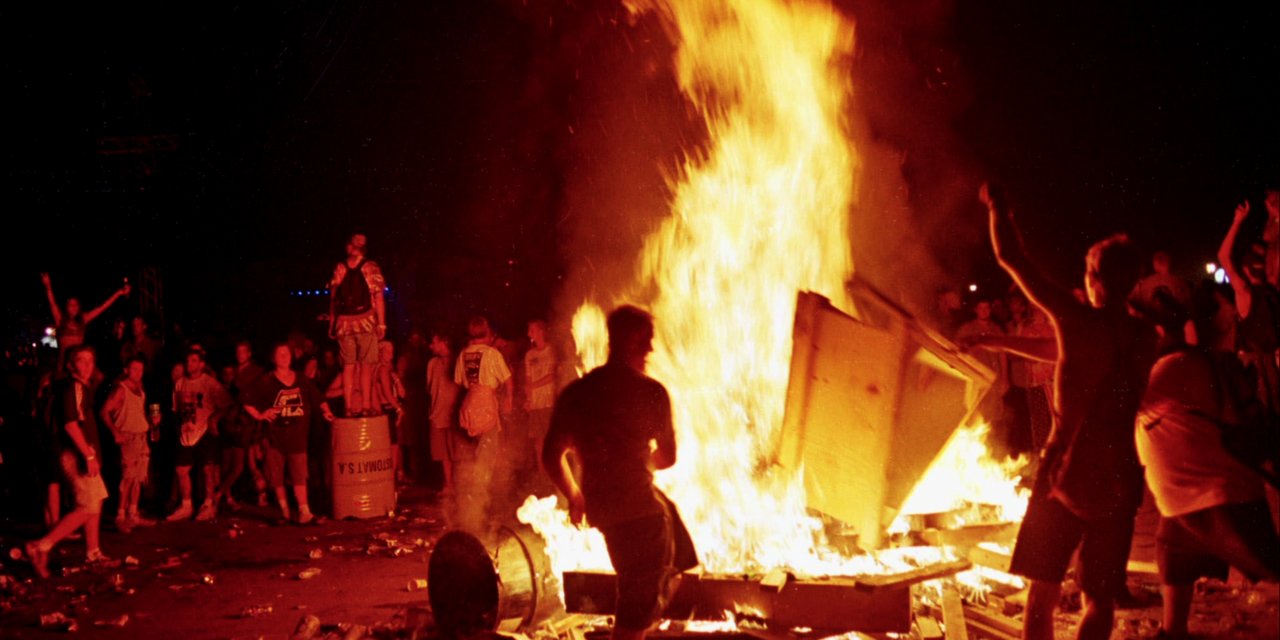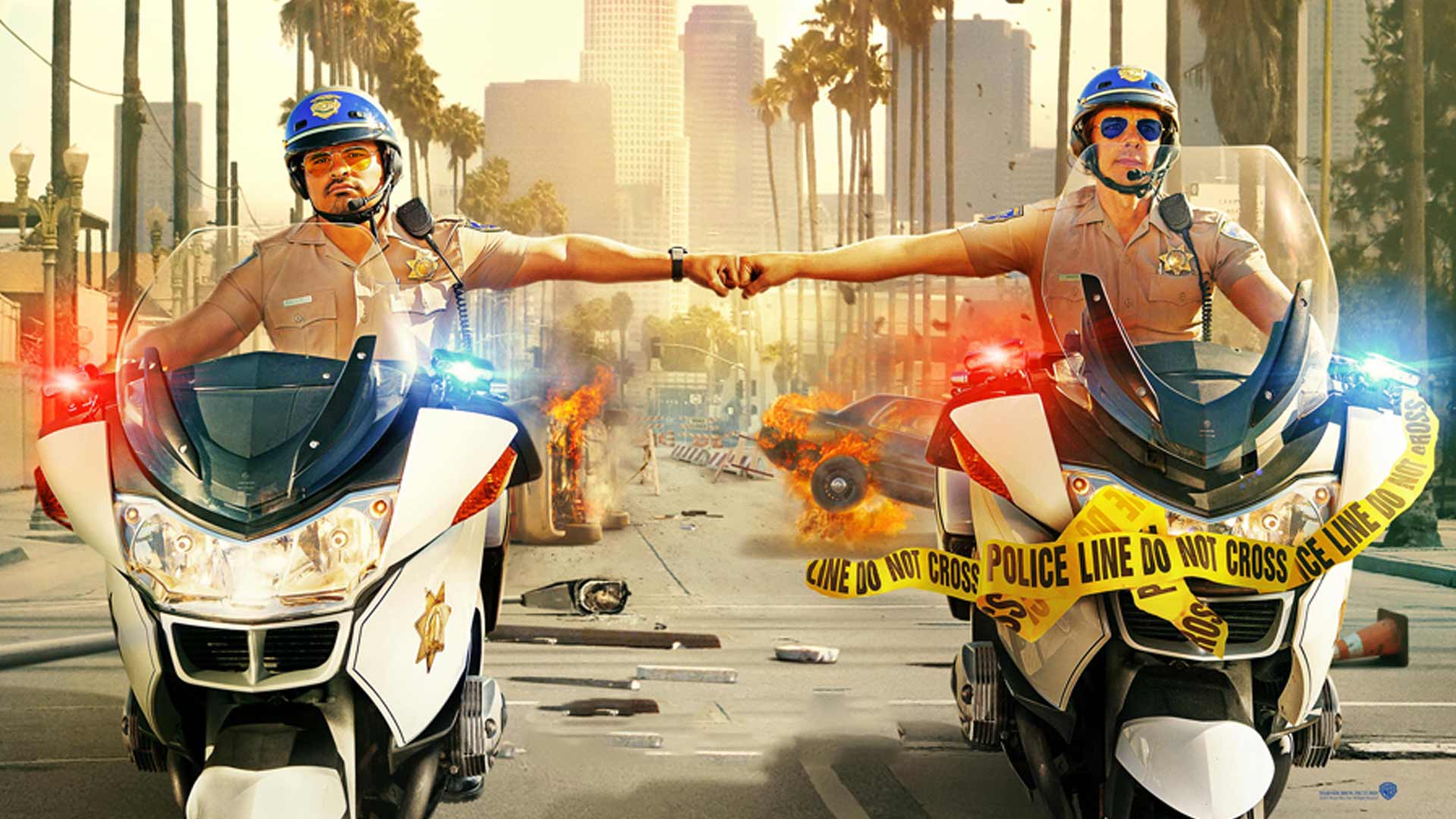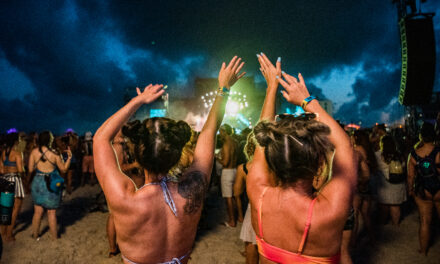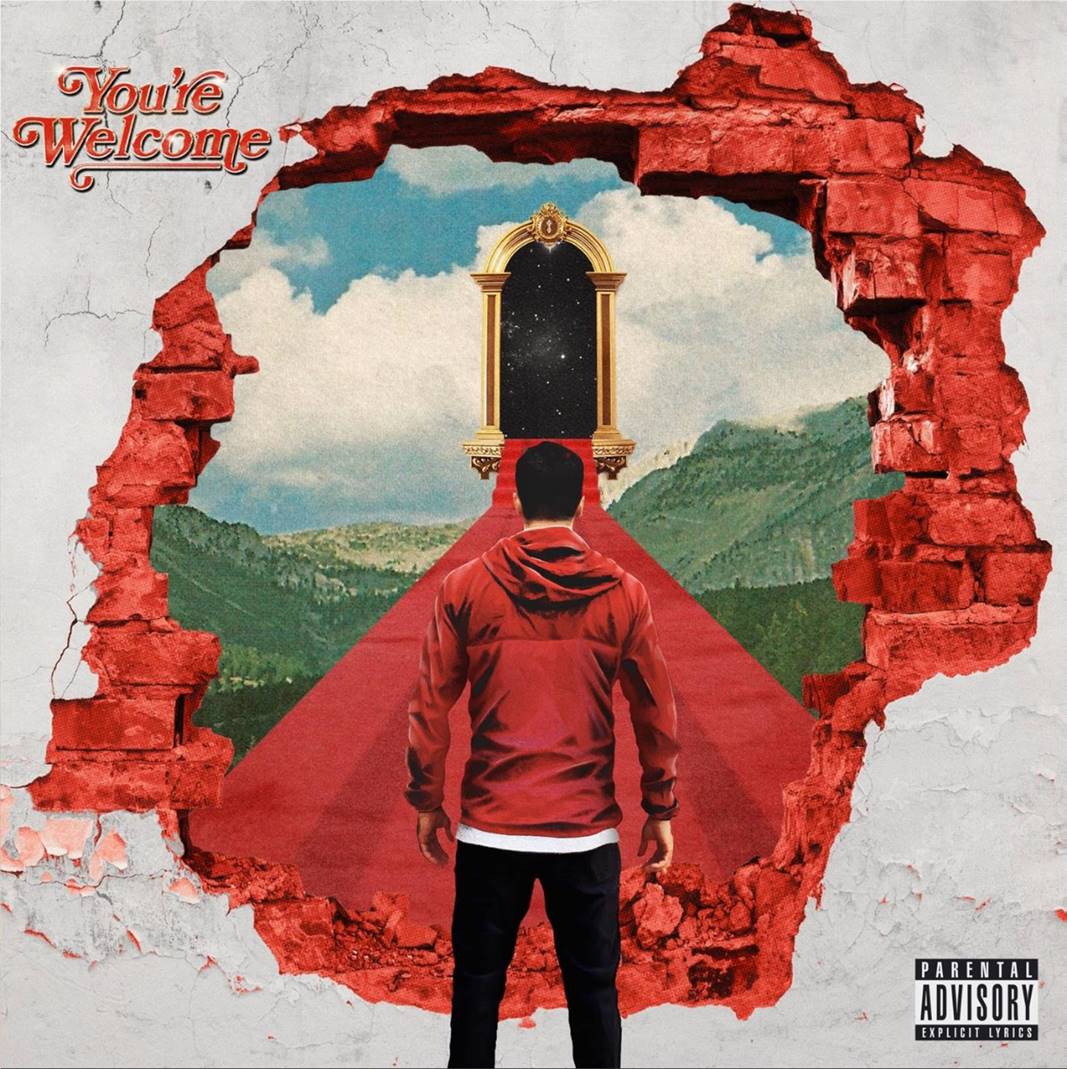At the end of the last episode of Netflix’s three-part documentary, Trainwreck: Woodstock 99, the question of why things went so wrong is raised to various people. Promoter John Scher put the blame squarely on the shoulders of the “lunatic fringe” of kids who he labeled entitled and had a fear of growing up. It’s in complete contrast to what people that attended the festival described what Limp Bizkit embodied to them — champions of the underdog who wore clothes just like they did. Many look back to romanticize the free love, Vietnam War protesting spirit of the first Woodstock in 1969. But what do you get when you have organizers looking to maximize profit, unethical conditions on an abandoned air base, a lack of respect for girls and women, and no understanding of the acts you’ve booked? Well, as many pictures and videos would show — a music festival looks like a Roland Emmerich disaster film.
Director Jamie Crawford yields a cadence that follows the festival’s slow descent into madness from day one to three. At first, the beginnings of reviving the festival for another iteration came from a decent place. Where 69′ carried an anti-war, care for each other message, Woodstock co-creator Michael Lang thought the 99′ version could shine a light on the gun violence epidemic highlighted by the Columbine high school tragedy. However, the world had come a long way from the age of flower crowns and the music stylings of Janis Joplin and Jimi Hendrix. MTV was still the epicenter of the temperature of music and the rise of nu-metal, rap like Eminem and 50 Cent, and alt-rock anthems from The Offspring and Blink 182 were pushing against the apex of boy bands and pop.
Plus, there were a lot of glaring bad omens even before Woodstock 99 welcomed their first guests. The 94 edition made nearly no money, was plagued by bad weather, and reported 7,000 injuries. When there’s money to be made, the concerns go out the window. Crawford illustrates each day of the festival as an ongoing bad omen, accented with flashbacks to show the audience where things went wrong. Interviews with Scher and the late Lang include accounts from the production staff, security, attendees, musicians like Korn’s Jonathan Davis and Jewel, and more.
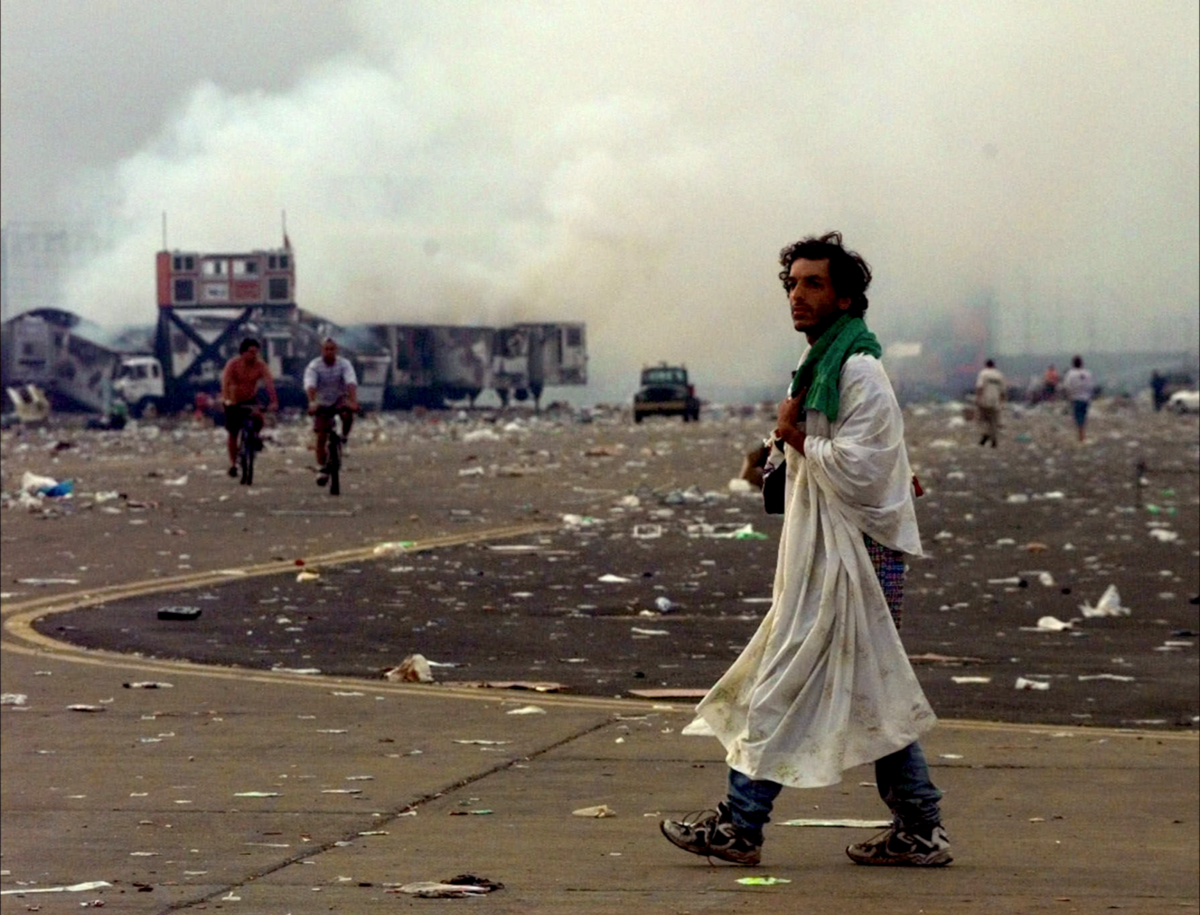
Photo Credit: Netflix
As we see the rampant price gouging, including $4 for bottled water, there was a decision to cut costs on food vendors. When the days went on, kids had to brave the festival grounds full of trash and poo-tainted water (a person got “trench mouth”), and the red carpet was rolled out for celebrities who enjoyed the luxury of sponsorships. Security (if you can call them that) was a bunch of unarmed young people who sold their shirts to those who wanted access. (Lang stated he didn’t want a “big government” presence there) It’s a schism that continues to widen as the asphalt-rich venue sends people looking for any ounce of shelter.
The organizers’ inability to see things through rose-colored glasses while Woodstock 99’s devolved (still, to this day) is frustrating, but another point that is scattered is attention to the accounts of sexual assault on the festival grounds. The documentary speaks about the male-bro temperature of the time — American Pie was the number one film, and the lawlessness bred a sort of bodily entitlement. Singer/songwriter Sheryl Crow received catcalls from male members of the crowd. That only grew to footage of men crowding around women to take off their tops, recollections of women crowd-surfing and being grouped, and a horrifying incident involving a passed-out under-aged girl being found in the back of a vehicle. An all-out failure of a brain trust who attributes these incidents to saying, “There were a lot of women who voluntarily had their tops off, y’know?”
Sadly, even with the Me-Too movement, the problems magnified by Trainwreck: Woodstock 99 are still going on today. While we look at this festival with cautionary eyes, one must ask what lessons we will instill inside ourselves regarding bodily autonomy and respect. The documentary also peers into some musical acts like Korn, James Brown, and the “infamous” Limp Bizkit set on Saturday. Nu-metal acts were mixed in with artists like Jewel, The Chemical Brothers, Willie Nelson, and Sugar Ray, to be fair. The festival lineup was not the bastion of heavy metal darkness like organizers would like to romanticize. There’s even a back-and-forth on how much responsibility Bizkit frontman Fred Durst wore on his shoulders in riling up the crowd. Scher thinks so, while others would point to the lack of shower and bathroom access and rapidly deteriorating conditions.
Much like Netflix’s Fyre Festival documentary, the end shows the apex of bonfires, looting, and exploding propane tanks. There are a lot of issues Trainwreck: Woodstock 99 strives to illustrate in 45+ minute episode chunks. Even with the rampant problems, some festival goers felt like it was one of the best times of their lives. Music festivals continue to be big business in a landscape that continues to shift away from the community feel of Woodstock ’69. Coachella offers an expensive VIP-tiered experience where people pick outfits in advance. As much as the music is essential, the experience is equally important.
One of the more ironic things is like Lang and Scher spoke about capturing the spirit of what made the first Woodstock great. Instead of re-creating those conditions, they chose to exploit them — becoming the very people they despised in their youth. Freedom and structure seem like opposing things, but they go hand in hand in a three-day festival. Greed will permanently poison the well and strip people to their ugliest states of being. While we revisit these stories, let’s not relive the lessons.
Photo Credit: Netflix

